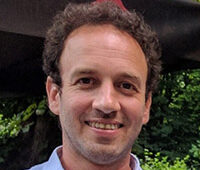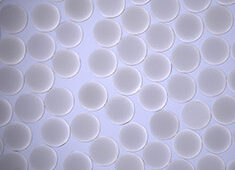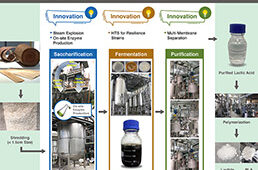InGaAs: Solar cells (bottom) made with arrays of nanowires. Engineers can tune the performance by using nanowires of differing composition and thickness (top). Image: Xiuling Li |
Tiny wires could help engineers realize high-performance
solar cells and other electronics, according to University of Illinois
researchers.
The research group, led by electrical and computer
engineering professor Xiuling Li, developed a technique to integrate compound
semiconductor nanowires on silicon wafers, overcoming key challenges in device
production. The team published its results in Nano Letters.
Semiconductors in the III-V (three-five) group are promising
for devices that change light to electricity and vice-versa, such as high-end
solar cells or lasers. However, they don’t integrate with silicon seamlessly,
which is a problem since silicon is the most ubiquitous device platform. Each
material has a specific distance between the atoms in the crystal, known as the
lattice constant.
“The biggest challenge has been that III-V semiconductors
and silicon do not have the same lattice constants,” Li says. “They cannot be
stacked on top of each other in a straightforward way without generating
dislocations, which can be thought of as atomic scale cracks.”
When the crystal lattices don’t line up, there is a mismatch
between the materials. Researchers usually deposit III-V materials on top of
silicon wafers in a thin film that covers the wafer, but the mismatch causes
strain and introduces defects, degrading the device performance.
Professor Xiuling Li’s group developed a method for growing semiconductor nanowires on silicon wafers that holds promise for advanced device applications, including solar cells. Image: Xiuling Li |
Instead of a thin film, the Illinois team grew a densely packed array of
nanowires, tiny strands of III-V semiconductor that grow up vertically from the
silicon wafer.
“The nanowire geometry offers a lot more freedom from
lattice-matching restrictions by dissipating the mismatch strain energy
laterally through the sidewalls,” Li says.
The researchers found conditions for growing nanowires of
various compositions of the III-V semiconductor indium gallium arsenide. Their
methodology has the advantages of using a common growth technique without the
need for any special treatments or patterning on the silicon wafer or the metal
catalysts that are often needed for such reactions.
The nanowire geometry provides the additional benefit of
enhancing solar cell performance through greater light absorption and carrier
collection efficiency. The nanowire approach also uses less material than thin
films, reducing the cost.
“This work represents the first report on ternary
semiconductor nanowire arrays grown on silicon substrates, that are truly
epitaxial, controllable in size and doping, high aspect ratio, non-tapered, and
broadly tunable in energy for practical device integration,” says Li, who is
affiliated with the Micro and Nanotechnology Laboratory, the Frederick Seitz
Materials Research Laboratory and the Beckman Institute for Advanced Science
and Technology at the U. of I.
Li believes the nanowire approach could be applied broadly
to other semiconductors, enabling other applications that have been deterred by
mismatch concerns. Next, Li and her group hope soon to demonstrate
nanowire-based multi-junction tandem solar cells with high quality and
efficiency.






